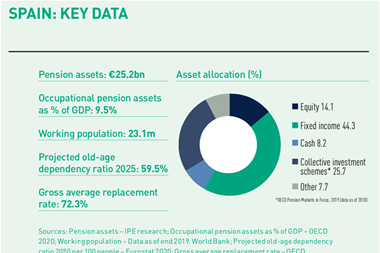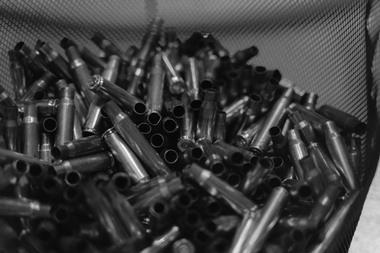Spanish pension funds enjoyed a sharp rebound in performance during the second quarter of 2020, following March’s COVID-19-related rout, when median returns had been -8.6%, according to Mercer.
The median return from April to June was 5.2%, with some funds achieving around 9%, and no funds reporting negative returns, according to the consultancy.
Its Pension Investment Performance Service (PIPS) survey covered a large sample of pension funds, most of them occupational schemes.
Xavier Bellavista, principal at Mercer, said: “Equity performance has been extraordinary, with double-digit performance in most asset classes for Q2, although the year-to-date performance remains negative, especially in European equities.”
The year-to-date median return was -3.7%, with some funds incurring returns below -6%.
Bellavista added: “The speed of the recovery was not enough to turn performance into positive territory, but alleviates the stressed performance of Q1.”
He said defensive fixed income, i.e. euro and non-euro government bonds, gave a positive performance, with euro investors enjoying the benefit of dollar appreciation. Within the PIPS sample, funds hold an average 10% in US equities.
But Bellavista observed: “Growth fixed income assets, high yield, emerging fixed income and some types of corporate fixed income are still showing negative returns for the year to date, despite a strong recovery in the second quarter.”
Meanwhile, the Q2 rebound brought the 12-month return for occupational funds as at end-June 2020 to -0.7%, according to the country’s Investment and Pension Fund Association (Inverco).
This in turn gave an average 1.1% annualised return for Spanish occupational funds for the three years to end-June, and 1.5% for the five-year period to that date.
Bellavista said that while during Q1 the riskiest funds incurred the most negative returns, the past 12 months showed the amount of portfolio risk bore almost no relation to the level of performance.
“The speed of the recovery was not enough to turn performance into positive territory, but alleviates the stressed performance of Q1”
Xavier Bellavista, principal at Mercer
He attributed this to the level of diversification within Spanish corporate pension funds.
However, Bellavista also said: “Most Spanish corporate pension funds overweight European equities in their portfolios. European equities performed worse than other markets during Q1 – Eurostoxx 50 returning -25% compared with 21% for MSCI World – and did not recover at the same speed as did other markets, with -14% for the year to date for Eurostoxx, versus -7% year-to-date for MSCI World.”
But he said the most significant change in asset allocation over the past five years has been the emergence of non-euro fixed income as a key asset, with non-euro equities also growing in importance.
Meanwhile, according to Inverco, non-domestic equities continued to be the largest asset class for pension funds as a whole, rising to 22.6% of assets over the second quarter. The total equity allocation also rose, to 35.6% of assets.
Fixed income fell over the second quarter, to 44.3% of portfolios, with Spanish government bonds still the biggest segment, but down to 18.3% of assets.
Inverco said that, at the end of June, total assets under management for the Spanish occupational pensions sector stood at €34.5bn, a decrease of 1.6% over the past year.
The number of participants in the occupational system remained at just under two million.


























No comments yet